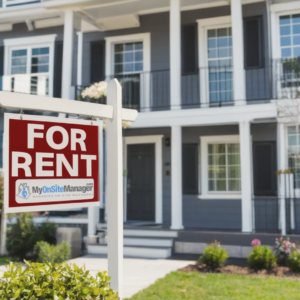Renters across the U.S. are feeling the pinch—again. After a brief slowdown in the early 2020s, rental prices are now surging at a pace that’s catching many households off guard. As we look toward the remainder of 2025 and into 2026, rent increases are becoming a persistent trend with no clear end in sight. But why is this happening?
Let’s explore the major forces driving this increase—and what it means for renters, landlords, and the housing market as a whole.
1. Post-Pandemic Urban Comeback
The post-COVID world looks very different, especially in cities. After years of remote work and suburban migration, urban living is making a comeback. Job growth in cities, coupled with a renewed interest in entertainment, dining, and culture, is bringing people back to metropolitan areas.
But the return hasn’t been smooth. Many housing construction projects were halted or delayed during the pandemic due to labor shortages and skyrocketing material costs. Even now, the pace of new developments hasn’t caught up with demand, leaving fewer units available and driving prices up. This supply-demand mismatch is one of the core reasons rents are rising again.
2. A Persistent Housing Shortage
One of the biggest structural issues in today’s rental market is a chronic housing shortage. Regulatory hurdles like strict zoning laws, high permitting costs, and “Not In My Backyard” (NIMBY) resistance have slowed down the development of new rental units—especially affordable ones.
Developers often prioritize luxury or high-end properties, which yield better returns, rather than building for middle- or lower-income renters. This leaves a large portion of the population competing for a limited number of affordable units, which inevitably pushes rents higher.
3. High Mortgage Rates Are Locking People In
With the Federal Reserve maintaining higher interest rates to combat inflation, mortgage rates have climbed sharply. This has priced many would-be homebuyers out of the market. Instead of moving into homeownership, these individuals are staying in—or returning to—the rental market.
The result? Increased competition for rental units, particularly in areas with strong job markets or good schools. Landlords, recognizing this high demand, are raising prices accordingly.
4. Inflation and Operating Costs
Inflation isn’t just impacting consumers—it’s hitting landlords too. The cost of everything from property taxes and insurance premiums to routine maintenance and renovations has gone up. In many regions, utility prices have also surged.
To stay financially viable, many landlords are passing these increased expenses on to tenants through rent hikes. Even smaller “mom-and-pop” landlords, who might have previously kept rents lower out of loyalty or long-term tenant relationships, are being forced to adjust pricing to survive.
5. Remote Work Has Shifted Demand Patterns
While remote work gave people the freedom to leave expensive cities, it also created demand in places that weren’t traditionally considered “renter hotspots.” Smaller cities and suburban communities that used to offer affordable housing are now seeing influxes of remote workers, which has pushed up rents in those areas too.
Meanwhile, in cities where return-to-office policies are becoming more common, rental demand remains strong—especially near business districts and public transit. This means that both traditional urban centers and once-affordable suburbs are feeling the squeeze simultaneously.
6. Corporate Landlords and Institutional Investors
Wall Street has entered the chat.
Large institutional investors and corporate landlords now own significant portions of the rental housing market, especially in single-family home rentals. These entities often prioritize profitability and have the capital and infrastructure to make swift decisions about rent increases.
Unlike small landlords who may have more personal relationships with their tenants, corporate landlords tend to follow market trends closely and may raise rents aggressively. Their growing presence can also distort local housing markets, making it harder for individual buyers or small landlords to compete.
What Does This Mean for Renters?
The outlook for renters is challenging. Wages have not kept pace with rising housing costs, and for many, finding affordable and stable housing is becoming increasingly difficult. Young adults, first-time renters, and lower-income families are bearing the brunt of this crisis.
Without significant policy changes, including investments in affordable housing, rent control measures, and zoning reform, these pressures may continue well into the future.
What Can Be Done?
While the situation may seem bleak, several measures could help stabilize rent prices over time:
-
Expanding affordable housing programs
-
Reforming zoning laws to allow for more multi-family developments
-
Offering incentives for developers to build mid-income housing
-
Investing in infrastructure to spread population density more evenly
-
Monitoring corporate ownership and ensuring fair housing practices
Final Thoughts
The rising rent prices of 2025 and 2026 are not a random occurrence—they’re the result of deeply interconnected economic, social, and political forces. While some of these issues will take time to resolve, awareness is the first step toward meaningful action. Whether you’re a renter, homeowner, or investor, understanding these trends can help you make smarter decisions and advocate for solutions that benefit everyone.
Source: Why Rent Prices Are Increasing in 2025 to 2026 – Medium

